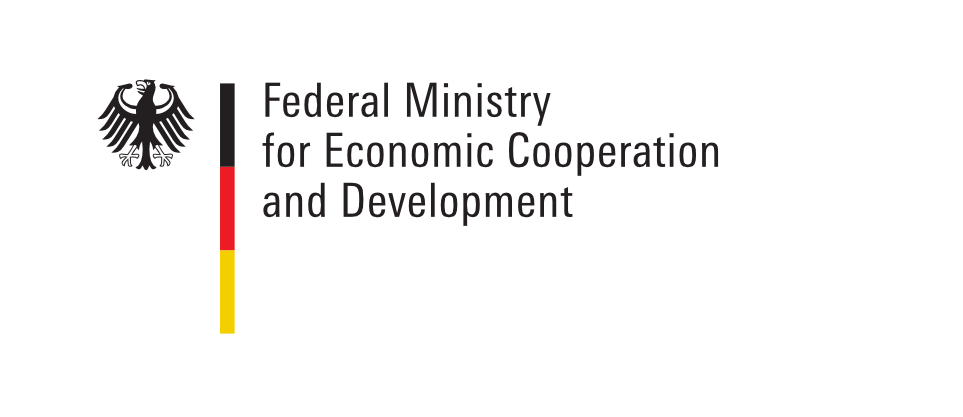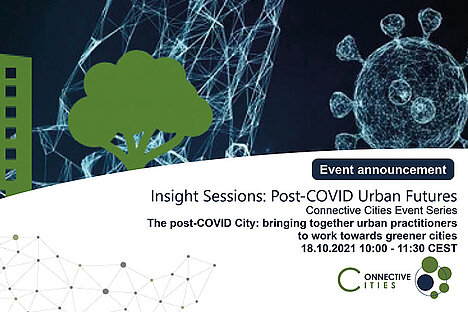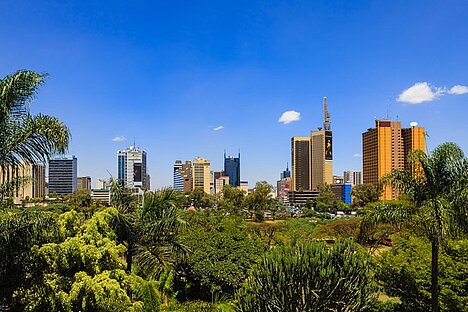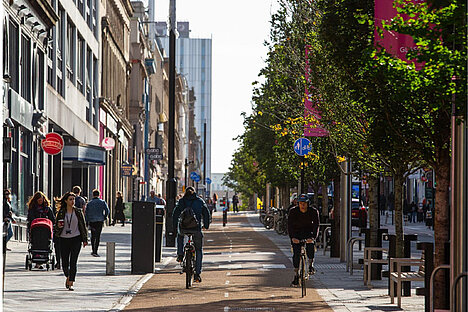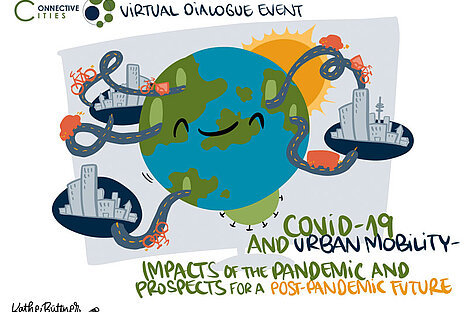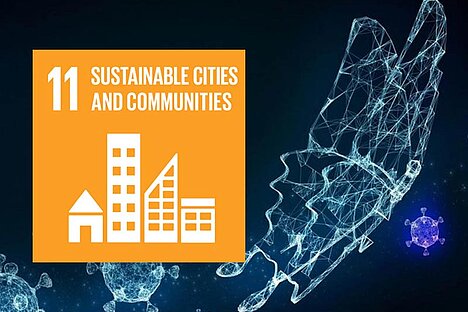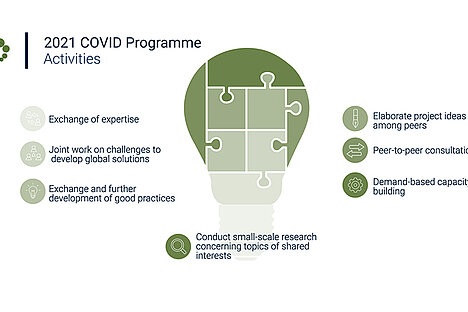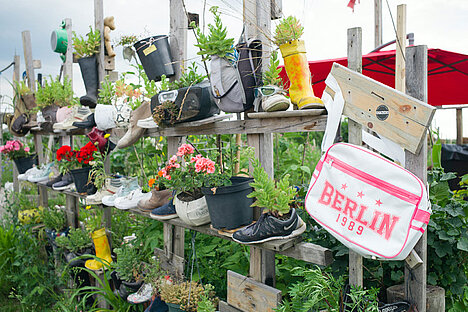- DE |
- EN
For green, inclusive and socially just urban development
Especially during the COVID-19 pandemic, access to urban green spaces proved to be an important source of recreation and stress reduction, contributing to the physical and mental health and well-being of urban residents. Rarely has the importance of accessible green space been more relevant than in times when social distancing became an important measure to fight the spread of the virus. As a result, voices grew louder to use the COVID-19 pandemic as a starting point for sustainable urban transformation. Post-COVID urban transformation plans offer the opportunity to prioritize aspects of green urban development to help reduce CO2 emissions and achieve our climate goals, as well as strengthen the multiple social, health, economic and environmental functions of urban green space. These functions include increasing urban biodiversity, strengthening resilience to future climate-related risks, and reducing the vulnerability of urban populations. Urban greenery has a positive impact on the health and well-being of residents from all social groups. New smart technologies and innovative solutions can support green infrastructure planning. Participatory open space planning and concepts such as urban gardening and the greater integration of accessible green spaces in densly populated cities offer opportunities to raise awareness of the importance of public open and green spaces. In addition, green investments create jobs and make an important contribution to improving urban economic performance.
Another area where the COVID-19 pandemic led to fundamental changes is urban mobility. In response to the pandemic, many governments imposed lockdown measures to limit circulation, which resulted in an unprecedented surge of non-motorized travel, including cycling and walking. As opposed to that, the usage of public transport plummeted due to the potential risk of contagion. Having experienced reduced traffic and improved air quality, the motivation to promote more sustainable urban mobility has grown among local governments. Investing in sustainable travel systems, including active mobility infrastructure, safer and more accessible public and low-emissions transport can have a range of urban environmental, economic and health benefits.
Municipal actors worldwide have found innovative solutions to promote green urban development and recovery from the COVID-19 crisis. The task now is to strengthen these initiatives and discuss existing approaches and develop new ones through a fruitful exchange of knowledge and expertise.
---------
Photo (above): jamesteohart | shutterstocks

